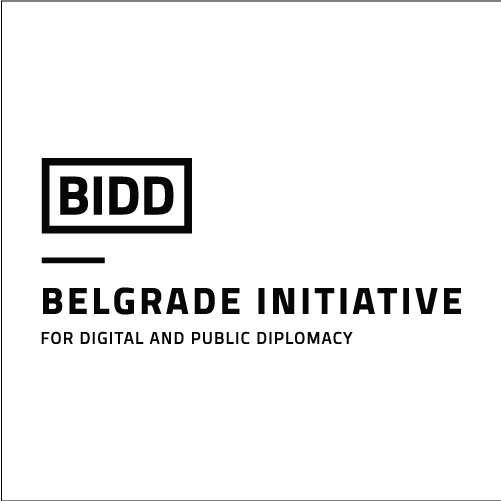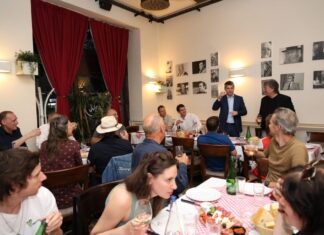shabait.com
Russia and Eritrea reinforced their diplomatic relationship last week when a delegation of Russia’s Sverdlovsk Region led by Mr. Sergey Bidonko, the Deputy Governor, visited Eritrea and held talks with the country’s Minister of Foreign Affairs Mr. Osman Saleh.
The delegation further had a chance to meet with the Ministers of Health and Tourism as well as the Director General of Mines in the Ministry of Energy and Mine. In line with the talks, the delegation also visited Azel Pharmaceutical Plant in Keren and the Massawa port.
This visit came a year after the Governor of the Region, Mr. E.V. Kuivashev, was in Eritrea on a two-day working visit. This is a result of Eritrea’s continuous and blossoming diplomatic relations with other countries.
Public diplomacy [JB emphasis] efforts are an increasingly vital part of Eritrea’s diplomatic outreach. Right now, for Eritrea in particular, the question of public diplomacy is extremely important.
The first question is fundamental: “Why public diplomacy?” Clearly, the benefits are substantial: the greater international acceptance that comes about as a result of engaging with the publics and the leaders of other countries. It is particularly relevant in changing relatively fixed perceptions of the country. Overcoming those, changing them, and providing additional information are vital tasks.
The ways in which world politics are changing also make public diplomacy more important. Especially the emergence of the information age and the Internet has flattened hierarchies. It is making people much more conscious of statements that are made in other parts of the world. It is allowing citizens throughout the world to engage in debates on a whole range of issues that have previously been the province largely of diplomats.
The second question; what is the importance of Cultural Diplomacy? Cultural Diplomacy is part of Public Diplomacy. Cultural Diplomacy (or “Diplomacy between Cultures”) has existed as a practice for centuries. Whilst the term “cultural diplomacy” has only recently been established, evidence of its practice can be seen throughout history and has existed for centuries. Explorers, travelers, traders, teachers and artists can be all considered living examples of “informal ambassadors” or early “cultural diplomats”. Indeed, any person who interacts with different cultures, (currently or in the past), facilitates a form of cultural exchange, which can take place in fields such as art, sports, literature, music, science, business & economy and beyond.
The recent Russian delegation that visited the country was accompanied by a youth sports team and a cultural troupe. The first played a match against its Eritrean counterpart, while the later performed Russia folk songs and dances at a theater the following evening.
While the game was seen as an experience for the Eritrean players as well as the Russians, the cultural performance held by the group gave a glimpse of Russian culture.
On the evening hours of Thursday and Friday the cultural group performed at the beautiful Cinema Asmara. The group which is a renowned cultural trope from the region played their own Russian music instruments. The band’s music is an aesthetic blend of classic and ethnic songs. The group’s repertoire includes traditional yet popular Russian folk songs and dances.
In the large theatre room at Cinema Asmara, the front rows were filled just moments after the doors were opened. Many made the effort to come in twenty minutes before the concert, as the crowd was eager to experience the excellent group from as close to the stage as possible.
The band brought energy and mastery to the room with a style of music that is a fairly rare treat to see live.
The music of performance was rich and diverse, and much like the band’s presence on stage the sound was bursting with vitality and passion. The band’s gusto was infectious, and as they performed, the songs transformed from traditional Russian melodies, to sleek, mystic and contemplative strains; the audience were engaged and moved by the band.
The group performed famous Russian songs such as Lady Madam, Kalinka which is considered one of the most famous Russian folk and folk-style songs in the country, and all over the world. Katyusha a song that is about a Russian woman called Katyusha. Standing on a steep riverbank, she sends her song to her lover, a soldier serving far away. The theme of the song is that the soldier will protect the Motherland and its people while his grateful girl will remain true to him. The group also performed Kamarinskaya “a quick dance tune” otherwise known as a nagriish, distinctive for its three-bar phrase lengths, which are played in an endless number of variations in moto-perpetuo fashion by an instrumentalist. This tune usually accompanies a squatting dance often called a Kazatsky (especially since in the West it has been associated in romantic fashion with Cossacks) and is played traditionally by a fiddler, a balalika player or a concertina player[.]
The show was followed by Sand-drawing show; amazing technique of painting by moving a hand in sand. Smooth strokes and the created pictures are continuously displayed in real time on the connected projection. Fluidity, high speed execution, sets of transparencies and superposition formed spectacular drawings in perpetual transformation which excited the imagination, surprise of the crowd.
As for the contemplation of the clouds in the sky, each one can recognize different forms which are assembled and are given birth to. With sand, magic pictures are growing on the table and the screen.
Music, art, drama, literature- –there are so many ways of sharing culture across national borders. Our lives are enormously broadened, deepened and enriched when we learn from one another, and governments often make it possible, through subsidies and various complex negotiations, for exhibits and performances to be mounted in distant countries. To the extent that familiarity increases mutual respect and understanding, the world benefits from a multiplicity of such interactions, and public diplomacy uses some of these cultural and intellectual resources to good effect. This is parts and parcel of what the Eritrean government is working towards achieving.
Last Updated (Wednesday, 06 March 2019 00:46)
Original Article
Public Diplomacy today: Eritrea receives Russian Delegation
Views: 2













